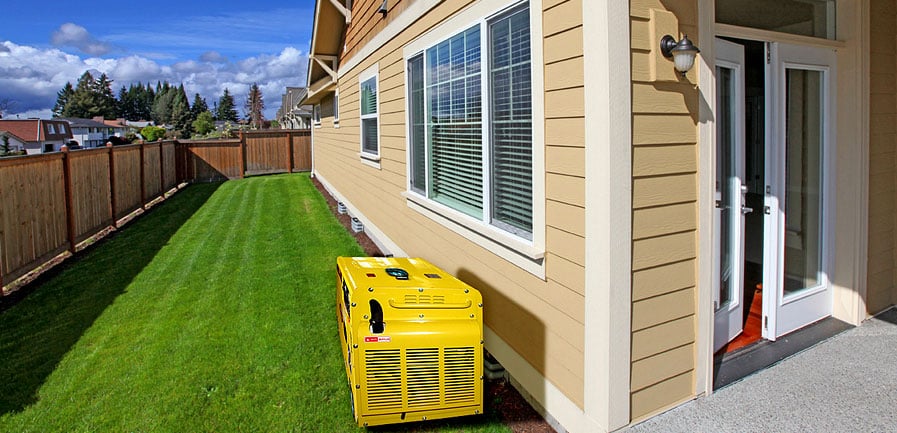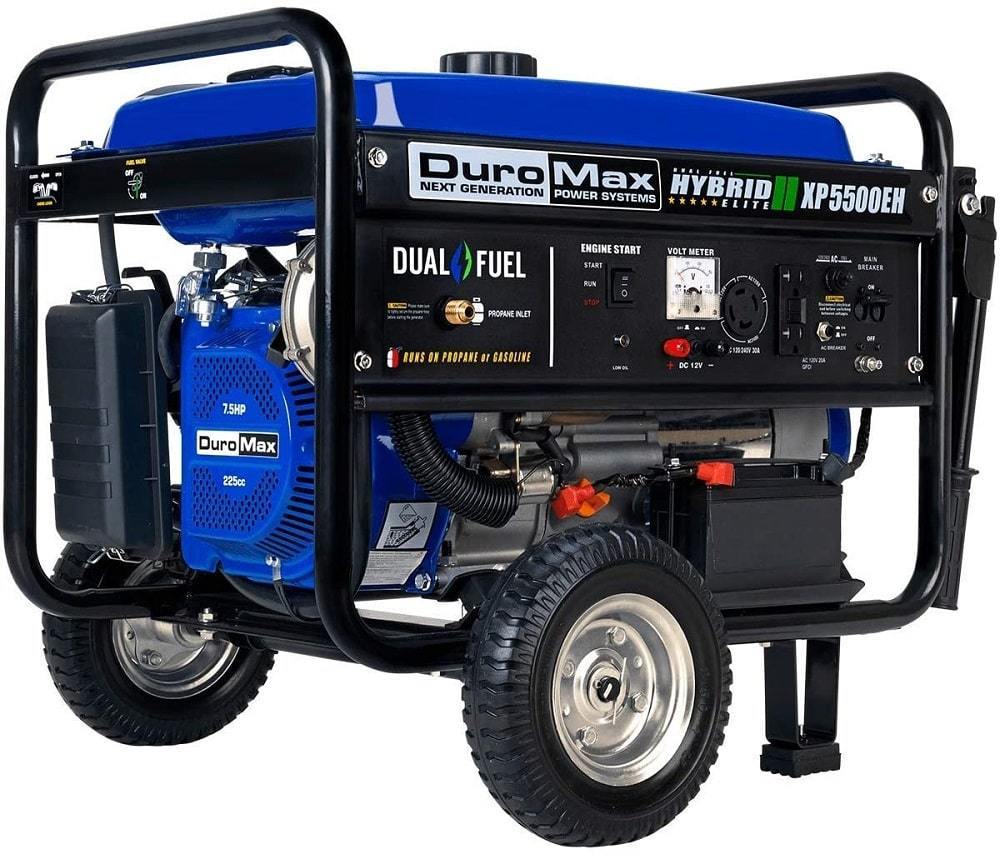Table Of Content

SCE is introducing clean energy solutions for new-construction housing. We are now accepting applications for the New Home Energy Storage Pilot (NHESP). As a leader in whole house generators, our top-of-the-line Generac generators, along with our skilled technicians and electricians, effectively ensure that you’re never left in the dark. Meanwhile, the Champion Power Equipment’s 3500-watt Portable Generator weighs approximately 103 pounds. So, while you can take it with you if need be, this generator just doesn’t have the power to keep your HVAC system up and running in an emergency. Safety and convenience features include a low oil shutoff switch that protects the engine, a four-wheel design for easy movement and storage, and quiet power at 68 decibels.
Electric Start
With a home generator, you don’t have to fuel up during emergencies or run long extension cords in the middle of the night or in pouring rain. Instead, the generator will automatically kick on to immediately take over powering your home. You can remove three sides of the enclosure for easy installation, maintenance, and repair. Unfortunately, the battery cost isn’t included in the price, so you will have to purchase it separately. It has a multilingual LCD display to monitor generator status, check for any maintenance, and utility power presence.
Here Are The Best Whole House Generators For Backup Power, According To Experts - - Study Finds
Here Are The Best Whole House Generators For Backup Power, According To Experts -.
Posted: Fri, 19 Jan 2024 08:00:00 GMT [source]
We’re Committed to a Clean Energy Future
Many manufacturers extend coverages to include an additional year or two, while extended warranties of up to ten years are often available for purchase. The larger generators featured on our list are approximately 30 inches by 30 inches by 48 inches, while the smaller generators are closer to 24 inches by 24 inches by 36 inches. The National Fire Protection Association (NFPA) code requires generators to be five feet or more away from openings such as doors and windows. Once you’ve figured out your power needs, the next two major considerations are the physical footprint of the generator and the amount of noise it makes. Whether you have a small yard or many acres of land, you’ll likely need the generator near your home, so the size and sound matter.
How big of a generator do you need to power your home?
The ATS automatically switches your home’s electrical panel from its connection to the grid to your generator when it detects a loss of power (this is also what can trigger some generators to automatically start). Before buying any generator, you should determine the power requirements of your home and your most essential large electric appliances. Refrigerators, air conditioning, sump or well pumps, medical devices, electric water heaters and portable space heaters will likely have the highest power draw and be most essential during power outages. Solar generators are also modestly sized portable generators simply because the technology needed to convert and store large amounts of power would require too much space.
Appliances
If, for example, you wanted to power a window air conditioning unit, your immersion water heater and a microwave, you’d need a generator with a 10,000-watt output to be safe. Assess your essential appliances and systems that need backup power during outages. This evaluation will help you determine the generator’s capacity that suits your needs without overspending. Whole house generators come in various sizes and capacities, each with a corresponding price range. Smaller generators that power essential circuits will typically be more budget-friendly than larger units that supply power to the entire house.
Size and Noise
Picking a generator depends mainly on the size of your home and what you wish to power. The average house will take at least 5,000 to 7,500 watts to run only the most critical equipment—think fridge, heat, and water. Often, a portable home generator can get you through an outage, but there are also options that are capable of powering your entire house. With the colder months approaching, we face the possibility of power outages that can last from hours to weeks. Investing in a standby generator is one of the best ways to keep your most important appliances up and running and help everyone inside stay a little more comfortable.
A heavy-duty standby generator with a high power capacity for blackouts. That depends on how often you lose power; on how quickly your power company takes to restore it; and, to a lesser degree, on your tolerance for living without power. If you lose power only occasionally, a portable generator is both less expensive and less convenient. The average 2,500 square foot house in the U.S. consumes close to 6,900 watts.
Best Reviews: Generac Guardian 3-Phase 20kW Automatic Standby

Portable generators are less expensive and take up less space on a property than whole-house generators—and they can be loaned to friends and family if they need a power boost. In some circumstances, though, there are clear benefits to choosing a whole-home generator instead. Powering a small home or RV with 3,000 to 4,000 watts is possible, but you will have to reduce your use of appliances and electronics.
If I don’t fit the program criteria, can I still get a home battery energy storage system?
And while noise may be the least of your worries in an emergency, this portable generator operates at a noise level of about 68 dBA—louder than a normal conversion and a tad quieter than a vacuum cleaner. These backup systems are typically powered by fuels (think natural or liquefied petroleum gas) to keep your home going during a blackout. "Most models start to work automatically, as soon as the home goes off the grid in an outage," explains Mark Dawson, the COO of Mister Sparky. You can also operate these units using natural gas from your gas line for unlimited fuel. These generators usually output between 5,000 and 520,000 watts and will cost between $6,000 and $11,000, including installation costs. All home generators with over 5,000-watt output are required to have an Automatic Transfer Switch (ATS).
With the generator placed immediately outside of your home, you should also consider the noise level, measured in decibels (dB). Most generators on our list average 60 to 70 dBs, for reference, a vacuum cleaner is typically approximately 70 to 80 dBs. However, it isn’t allowed in all states in the United States, so you will have to check with your local repair shop if you can do it. To avoid the chances of it happening, you can instead install an automatic transfer switch. When it comes to the safety of delicate electronics, all the generators that we’ve included in the list are good.

Both LP and diesel fuels will require tanks large enough to run the generator correctly. Similarly, the natural gas meter and gas lines will need to be the correct size. Before installation, your contractor will verify this with you, but you can find this information in the installation manual on our product pages. Decisions about size, type, fuel, and other elements will help homeowners determine what the best whole-home generator option is for their home.
Different Generator Options To Consider – Forbes Home - Forbes
Different Generator Options To Consider – Forbes Home.
Posted: Thu, 18 Apr 2024 07:00:00 GMT [source]
The PowerPact includes most of the same features as Generac’s larger models while requiring the smallest footprint of those we’ve ranked. Solar generators are the most environmentally-friendly option, but they're also the most expensive. Solar generators use solar panels to convert sunlight into electricity, and they can be used to power your home even when the sun isn't shining.
In an emergency situation, gas and propane may be hard to come by, but the power of the sun will always be there—and it’s unlimited. So, now that you’re looking for a solar-powered option, Jackery’s Explorer is an excellent choice. The price of a full-house generator can vary greatly, since everything from the cost of the system to the installation depends on your location, the machine's fuel type, and the quality of the system you purchase. When deciding if you should invest in a large capacity generator, consider how often your home loses power as well as what you stand to lose during long or frequent outages.
Unlike their smaller, portable cousins, home generators are permanently installed and connect directly to the home’s electrical circuits. Because of its smaller output, this Champion generator features the best average cost and the quietest noise level of all those generators on our list. But keep in mind that per watt, it isn’t performing any better than its competitors—all of which have higher outputs. It has a power output of 13kW and is durably built with an aluminum enclosure, which can withstand winds up to 180 MPH. You can either fuel it up with natural gas or liquid propane at your choice. The Cummins Power RS13A comes in both liquid propane and natural gas options, thus suitable for various households running on either type of fuel.
The process is similar to a hand-cranked flashlight but on a much larger scale. For the comfort of the homeowner, 10% of the total ranking went to noise level (dbA). Each generator’s noise level was evaluated and from there was scored based on the loudness (or softness) of its average level. Be sure to purchase the right type of generator for the fuel you’re looking to use, or check to see if it can be easily converted from one fuel source to the other (most can be). 【Expandable Emergency Power】 - Expandable 2016Wh capacity battery power station. Link two extra batteries to get a massive 6048Wh, keeping your home powered on in any emergency.
No comments:
Post a Comment